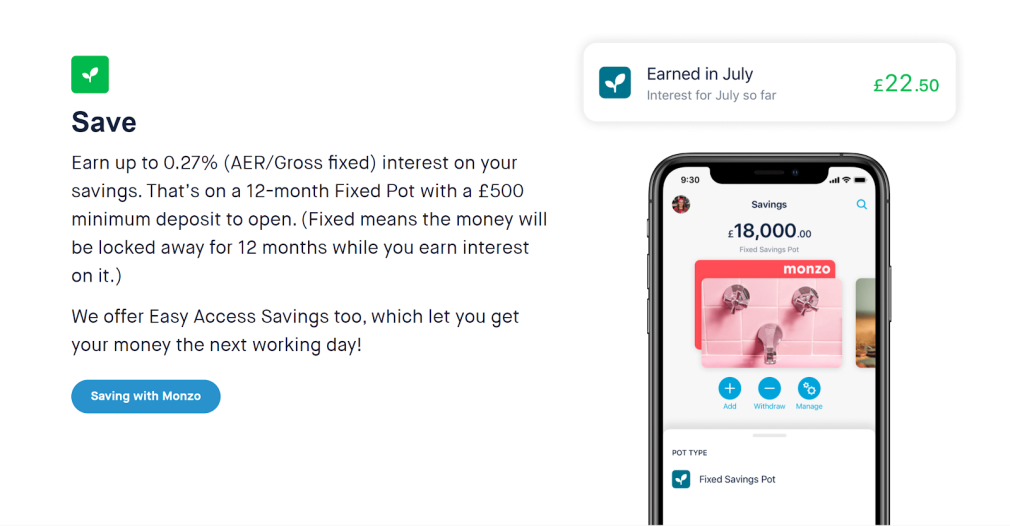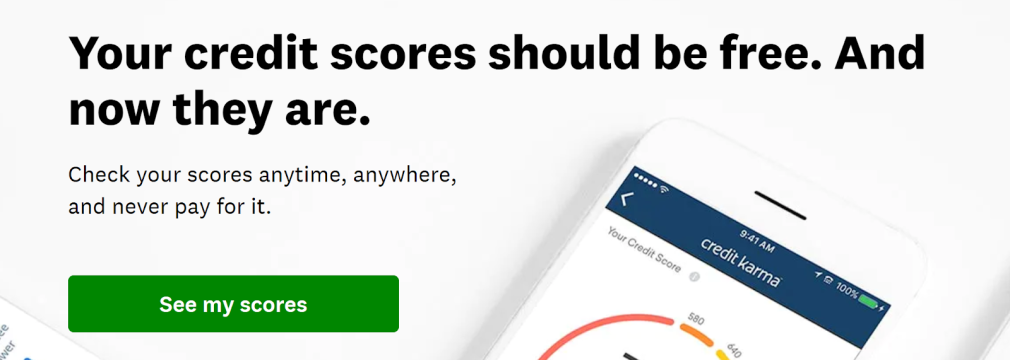If your organization operates within a niche sector, it’s crucial to create web and advertising copy that appeals to your target audience. The narrower the scope of your product, the smaller the number of customers, which means that the potential rewards for having engaging and informative content are higher — and the consequences of ignoring it more stark.
The finance sector is a great example of this. With companies leveraging technology to create more and more user value in the market, brands are now operating in an increasingly competitive space. They need to be direct and creative with their content in order to stand out.
This is a tricky task, though. Financial copywriting is especially complex because it often involves communicating advanced technical or legal concepts while still attempting to remain engaging and enticing to audiences.
Striking this balance is vital, and requires a writer who can demonstrate not just technical expertise, but:
An understanding of audience pain points Ideas on how to build attractive and helpful content The ability to convey product value in both long- and short-form types of contentIn addition, there are a lot of sub-niches in finance (with more evolving all the time), and establishing your brand’s voice as an authority in one poses a number of problems.
Financial Copywriting Examples
In this article, we will look at some of the ways financial and fintech companies are successfully navigating these minefields, and also discuss how using subject matter experts can make a huge difference to your content campaigns.
So, let’s take a look at some examples.
Robinhood
Since the end of 2019, retail investing — the trading of stocks (and other financial instruments) by amateur individuals — has exploded. There are numerous reasons for this, but one of the biggest is ease of access; thanks to mobile trading apps like Robinhood, TD Ameritrade, and eToro, anybody can now access the financial markets.

Why is it special?
In terms of copy, Robinhood has captured the sentiment behind retail investing perfectly. Playing on the mythical activities of its namesake, its marketing materials regularly make reference to “democratizing the market”, with the company’s homepage announcing that they offer “investing for everyone”. This messaging reinforces the idea that the average person on the street can now get access to the stock market, which has traditionally been the reserve of institutional players such as banks and equity firms.Robinhood itself has undergone some significant PR difficulties in recent times, but there is no doubting the impact of its copy: 700,000 users signed up to the platform before it had even launched in 2015, with that number reaching 13 million in 2020.
You Need A Budget (YNAB)
According to a 2021 study by Business Insider, 97% of millennials prefer to conduct their banking and personal finance activities online. Unsurprisingly, there is a wealth of mobile apps targeted at this demographic.
However, copywriters need to tread cautiously in this space. They should understand the main financial issues facing millennials (such as heavy debt and lack of access to the property ladder), while also having a grasp of their financial goals.
For example, it’s a common accusation that millennials waste money, but a 2020 Bank of America study shows that saving for retirement is actually a high priority for this generation. Copywriters need to be able to dig beyond stereotypes and see the real trends — and show that they understand what their audience is looking for.

Why is it special?
You Need A Budget (YNAB) does exactly this, encouraging readers to “stop living paycheck-to-paycheck, get out of debt, and save more money”. In one sentence, they identify the core financial problems facing their target audience, and offer them a way to help them overcome these issues.Mint
One of the biggest issues with financial copywriting is that it’s difficult to say something original. Phrases such as “on the go”, “at your fingertips”, and “in the palm of your hand” may have been fresh five years ago, but now they are massively overused.
Take these examples from Burling Bank, HSBC, and Natwest respectively:



Pretty uninspiring, right?
To stand out, your copy needs to be unique and focus on what it is that makes your product or brand different. Mint — one of the world’s most popular personal finance apps – is a good example of how to do this.
Why is it special?
 It’s headline copy makes direct reference to its modern approach, but is also a playful homage to the company’s name (mint = fresh). It also positions the brand as modern and progressive. Traditionally, marketing materials for financial products were serious and formal, but by introducing itself with wordplay and humor, Mint immediately suggests a different way of doing things — both literally and figuratively.
It’s headline copy makes direct reference to its modern approach, but is also a playful homage to the company’s name (mint = fresh). It also positions the brand as modern and progressive. Traditionally, marketing materials for financial products were serious and formal, but by introducing itself with wordplay and humor, Mint immediately suggests a different way of doing things — both literally and figuratively.Monzo
As mentioned, one of the key features of modern financial copywriting is the need to communicate technical financial terms in a way that is still “catchy” and easy to understand.
Monzo is a mobile-only banking app that announces itself as “banking made easy”, and this is definitely reflected on their landing page.
Why is it special?
Take this segment, for instance, that promotes its savings accounts:
 Some readers will understand what is meant by a “0.27% (AER/Gross fixed) interest” savings account, but there’s a good chance that many won’t. Monzo bridges this gap and ensures that everybody understands the value of its product by breaking it down into simple terms: “Fixed means the money will be locked away for 12 months while you earn interest on it.” By explaining its financial products to readers in this way, Monzo is more likely to attract first-time investors with little knowledge or confidence of how such instruments work — and all without sounding condescending, too.
Some readers will understand what is meant by a “0.27% (AER/Gross fixed) interest” savings account, but there’s a good chance that many won’t. Monzo bridges this gap and ensures that everybody understands the value of its product by breaking it down into simple terms: “Fixed means the money will be locked away for 12 months while you earn interest on it.” By explaining its financial products to readers in this way, Monzo is more likely to attract first-time investors with little knowledge or confidence of how such instruments work — and all without sounding condescending, too.Credit Karma / PwC
Traditionally, customers looking to purchase financial products would meet with a relevant expert in person. However, as banks and other institutions continue to move their operations online, this kind of meeting is becoming a thing of the past.
Recreating this personal touch in your content can be a challenge for copywriters, but it’s an important step for establishing a relationship — especially when financial products are involved.

Why is it special?
Credit Karma is a good example of how a finance brand can adopt a conversational tone with readers, and go some way to replicating that sense of interaction between people. It also communicates both the pain point of the customer and the company’s solution; not bad for just two simple sentences.It’s not just disruptor B2C apps that understand the value of this approach, either. Global B2B financial giants — such as PwC — are also adopting a conversational tone in their copy, as this example (taken from their ‘Services’ page) illustrates:
 Inviting potential clients to “have a look” at the products they offer is more reminiscent of a small retail shop than a multinational corporation, and the phrase “let’s talk” is a casual invitation that creates a relaxed sense of close personal interaction.
Inviting potential clients to “have a look” at the products they offer is more reminiscent of a small retail shop than a multinational corporation, and the phrase “let’s talk” is a casual invitation that creates a relaxed sense of close personal interaction.NerdWallet
As well as adopting a more conversational tone, many modern finance brands also lean more on the use of informal language. As already mentioned, this hasn’t always been the case; money is a serious topic, and financial institutions have tended to reflect this in their content and marketing materials.
However, in order to better resonate with their target audiences, many copywriters are now using casual language in their content — within reason, of course. It’s important to strike a balance in this regard, as readers will not entrust their money to a finance company that doesn’t appear to take itself seriously.
NerdWallet — a popular financial advice website — is a good example of how this balance can be struck.
Why is it special?
 Their headline copy makes reference to several standard financial terms, such as “expert money advice”, “helpful tools”, and “tailored insights”, but also contains several casual terms, such as “crush your money goals”, “turn to the Nerds”, and “behold the power of nerdy research” (in this instance, ‘nerds’ refers to the company’s financial advisors and ties in with its branding). Essentially, the company is offering a traditional product — consultations with financial advisors — but presenting it in a way that has more appeal, resonance, and cultural relevance to it’s millennial target audience. Elsewhere on its website, it also makes reference to customers “levelling up” their finance, ensuring sitewide consistency with the ‘nerd culture’ branding angle it has adopted to great success.
Their headline copy makes reference to several standard financial terms, such as “expert money advice”, “helpful tools”, and “tailored insights”, but also contains several casual terms, such as “crush your money goals”, “turn to the Nerds”, and “behold the power of nerdy research” (in this instance, ‘nerds’ refers to the company’s financial advisors and ties in with its branding). Essentially, the company is offering a traditional product — consultations with financial advisors — but presenting it in a way that has more appeal, resonance, and cultural relevance to it’s millennial target audience. Elsewhere on its website, it also makes reference to customers “levelling up” their finance, ensuring sitewide consistency with the ‘nerd culture’ branding angle it has adopted to great success.In Conclusion
Niche copywriting is evolving rapidly, and an increasing number of businesses are utilizing this evolution to reach — and successfully appeal to — their target audiences.
As a result, your organization should take stock of how it is communicating with its potential customers. As a starting point, consider these key takeaways:
Companies are attempting to avoid financial jargon and technical concepts in their core messaging, and are instead switching to conversational tones with simple language. Younger generations have different financial goals, and are facing different financial issues than their boomer counterparts. Copywriters need to identify the kind of language that resonates with these audiences, and understand what their pain points and their objectives are. In an increasingly crowded market, too many companies are repeating the same tropes and diluting their own messages. Marketing teams should focus on identifying the USPs of their product, and building their copy around that.Most importantly, remember that these takeaways are not just applicable to financial copywriting. Regardless of your company’s niche, it’s always important to communicate in a way that your target audience is comfortable with; to understand what their pain points are; and to focus on how your product can solve their problems.
Producing Your Own Financial Copy
So, what about your own content?
It’s obviously advisable to try and incorporate these takeaways, and to follow a similar approach to the brands listed above.
The most important point, though, is that when you create content for any niche sector, your copy has authority and credibility.
As we have seen, this is especially true for finance. It is a highly lucrative niche and, to see positive results, your organization should not approach things with a broad brush.
This means that your copy should be written by specialists who have:
A relevant and up-to-date understanding of the industry’s trends A relevant and up-to-date understanding of the industry’s content trends A good idea of the common text and visual formats that are often employed in competitor materialsOf course, you (or your in-house writer) may well possess one or more of these attributes. But for your content to be fully effective, it’s a better idea to hire someone who can confidently tick all of these boxes.
Content Marketplace can match you with writers who possess expertise and experience in your industry, and ensures that your brand’s copy is unique, engaging, and targeted — just like the examples in this article.
Innovative SEO services
SEO is a patience game; no secret there. We`ll work with you to develop a Search strategy focused on producing increased traffic rankings in as early as 3-months.
A proven Allinclusive. SEO services for measuring, executing, and optimizing for Search Engine success. We say what we do and do what we say.
Our company as Semrush Agency Partner has designed a search engine optimization service that is both ethical and result-driven. We use the latest tools, strategies, and trends to help you move up in the search engines for the right keywords to get noticed by the right audience.
Today, you can schedule a Discovery call with us about your company needs.
Source:





